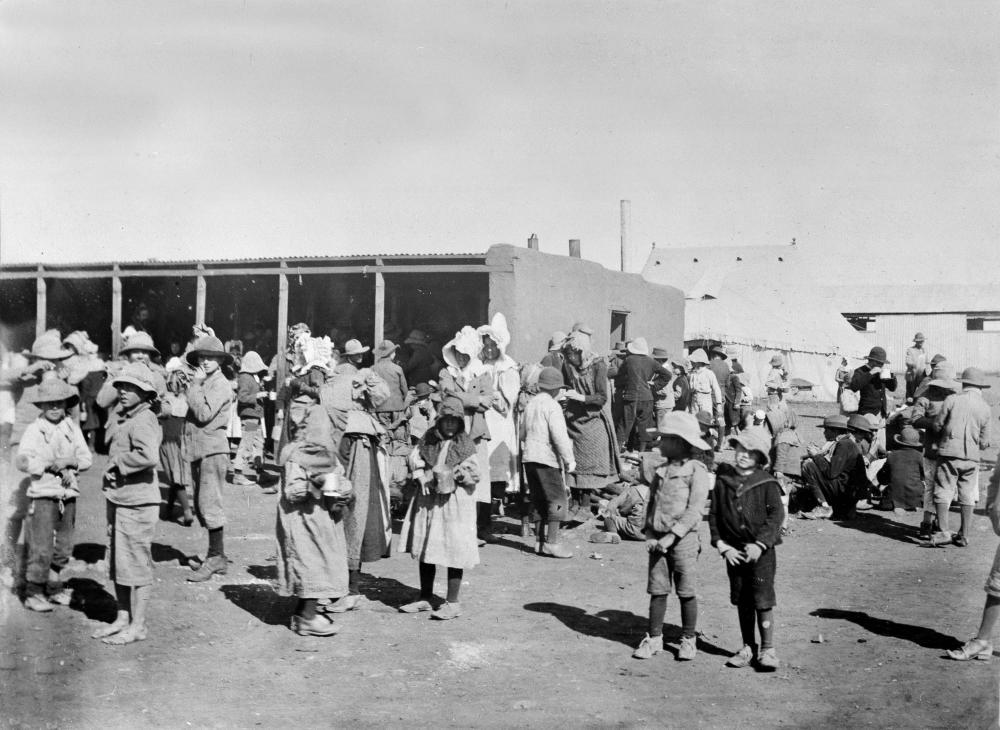
3 minute read
‘Jewish Women in Concentration Camps’
by Emmanouil Kareklas
The Nazi regime’s hostile and persecutory acts towards Jewish women have been captured in numerous memoirs narrating experiences from Auschwitz-Birkenau and Ravensbruck concentration camps, in which hundreds of thousands of women were held captive. In 1939 the all-women Ravensbruck concentration camp, located 80 kilometers away from the German capital of Berlin, opened its gates to what was to become a crematorium for thousands of Jewish women. During the spring of the same year, the first prisoners were transferred from the Lichtenburg concentration camp as slaves, work prisoners, or as experimental subjects. By 1942, the continually expanding camp was surrounded with workspaces that aimed at physically exhausting the prisoners.
Advertisement
In her book, Ravensbrück: Life and Death in Hitler’s Concentration Camp for Women, Sara Helm, a Holocaust survivor, explains the physical challenges she faced: “[T] he entire time I was in the camp it was as if I had a double personality. My real self seemed to be observing what was happening to my physical self.” Prisoners who were deemed inadequate for extortionately demanding and draining labor by the SS met their faith in gas chambers or ovens. Consequently, the years from 1942 to 1945 saw increased mass murder as a typhus epidemic, that resulted from deteriorating sanitation within the camp, weakened inmates. Between this time period more than forty thousand of the one hundred thirty two thousand women prisoners were murdered through starvation, unethical experiments, gaseous showers, and execution as they were feeble for labor. In the spring of 1945 the brutality of SS officers towards prisoners escalated as the Red Army approached and the liberation of Ravensbruck was inevitable. Finally, three days before liberation on April 27, 1945, SS officers ordered all women capable of walking to fall in line as they aimed to exterminate those who experienced the horrors of Ravensbruck in a march of death. Today, it is estimated that ninety two thousand of the one hundred thirty two thousand prisoners of the concentration camp were murdered by the Nazis. The Nazi motto “Arbeit macht frei”, or “Work makes you free”, reads to this day the entrance to the infamous Auschwitz-Birkenau concentration camp in which 1.1 of the 1.3 million prisoners were murdered between May of 1940 to January of 1945. Upon their arrival to Auschwitz, Jewish women were, according to a survivor, “shaved and stripped for the entertainment of Nazi guards’’. Such statements expose the genderspecific suffering that occurred throughout the Holocaust, as women prisoners experienced punishments and challenges, that were different and possibly, worse than others. Throughout the Second World War the Auschwitz-Birkenau concentration camp was regularly developed by Nazi engineers, doctors, and scientists as the Reich aimed to perfect mass murder to wipe out all Jewish people. https://www.goodreads.com/work/quotes/15752237-if-this-is-a-womaninside-ravensbruck-hitler-s-concentration-camp-for https://www.yadvashem.org/podcast/episode-6-women-in-auschwitz.html https://www.goodreads.com/author/quotes/801549.Sophie_Scholl

In this horrible ambition, Jewish women became the epicenter for brutality as they were regarded as physically weak and therefore worthless, a source of threat to the Aryan race due to their ability to repopulate the Jewish race. Their heroism has now become a recurring source of inspiration in world literature, countless women serving as emblematic figures of resistance to bigotry and racism in the centuries to come.
“The Battle She Endures”
by Kalypso Isaidou
For months her life had led to this, the beginning of the end. Where she could no longer resist, and her fortress could no longer defend.
She lived for her daughters all that time, when her husband was gone. But to her he was still alive, until time slowly proved her wrong.
At that moment she became the matriarch, holding onto her daughters and her faith. Her husband’s death had left its mark, it was now her role to keep them safe.
She spent the mornings working in fatigue, and the nights singing her daughters to sleep. But no amount of pressure made her weak, her resistance did not let her weep.
And so she continued with great remarks, until the forces unforgivingly flooded the city. But that was not the end of the matriarch, just another testament to her abilities.
She held them until the last moment, when mothers and daughters were separated. She naturally took it as her last omen, as the unbearable fate she awaited.
Reflection
There were so many efforts and moments made by Jewish women during the Holocaust that should be held with great regards. And in my poem I want to note one of those moments, which narrates a time when Jewish women had to hold the fortress of their homes and their families because their husbands had already been taken. In that sense, I want to therefore show how these women rose to the occasion to provide and nurture their families on their own, without hesitation and with great persistence. As for my poem itself, I write it from a narrative perspective because I don’t want to write as if I know this experience firsthand since it does not belong to me. I also use rhyme because I personally feel that the story flows better and emphasizes the right points. And I hope that at the end of this, people are not left with sorrow but with great admiration of the strength these women were able to conjure up when it was needed.



